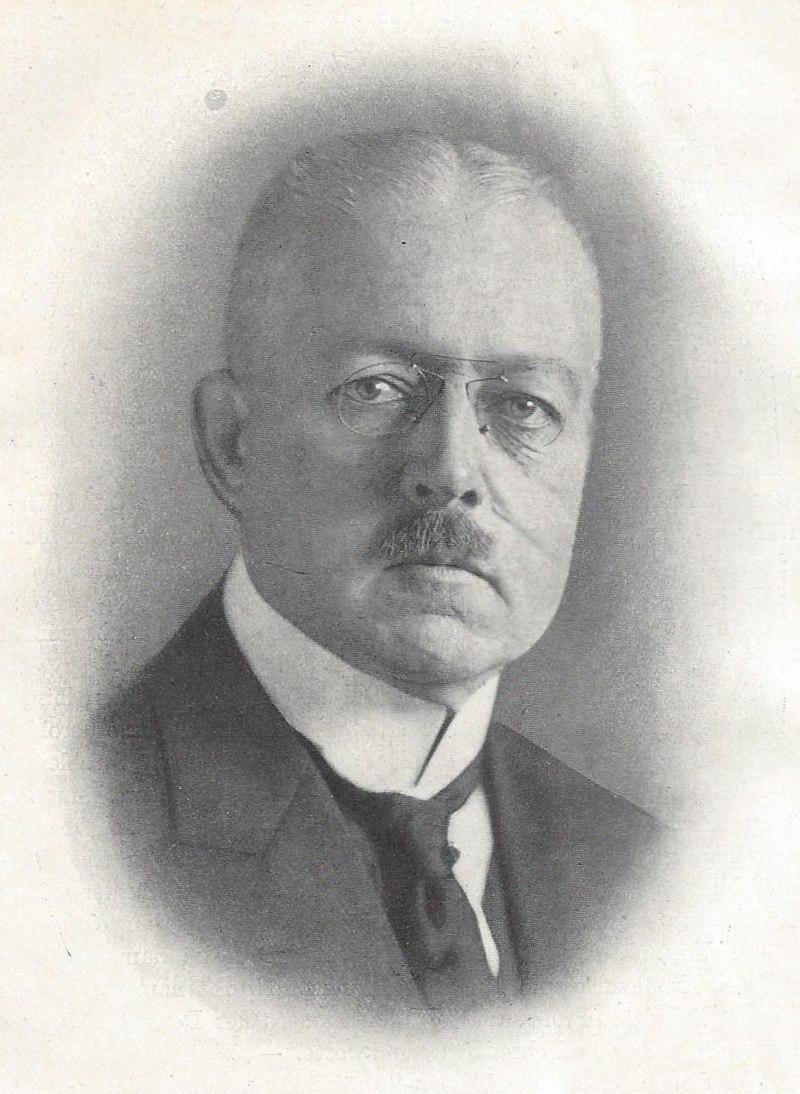Gr. osteo = of the bone, petrō-, var. s. of petroûn = to turn to stone.
Albers-Schönberg disease, or osteopetrosis, is characterised by increased radiological density of the skeleton. The autosomal dominant form is clinically innocuous, while the autosomal recessive type is lethal in infancy.
Biography
Albers-Schönberg was a pioneer in radiology, active in Germany in the early decades of the present century.
Heinrich Albers-Schönberg was born in Hamburg on 21 January 1865 and received his schooling in that city. He entered the University of Tübingen in 1885 and qualified in medicine at the University of Leipzig in 1891. He was popular with his fellow students, who were attracted by his sense of humour, warm personality and zest for life.

Albers-Schönberg spent the first 5 years of his career gaining experience in Vienna, Berlin, Leipzig and Paris before settling in Hamburg in 1895. He was married in the following year to the youngest daughter of a senator, Dr. Schroeder, and in 1897 his son, Ernst was born.
Albers-Schönberg introduced many innovations in radiology and in 1897, in collaboration with Dr. Deycke, he established an institution for the application of radiographic techniques to internal medicine. In the same year they founded a journal entitled Progress in the Field of Roentgenology. Albers-Schönberg was highly productive at this time and wrote a classic textbook, Index and Atlas of Normal and Abnormal Roentgenological Anatomy, which subsequently went into 33 editions. He was also the author of a book on radiographic techniques for physicians and students. This work was translated into Italian and Russian and many editions were published. In 1903 Albers-Schönberg was appointed to the Hamburg Hospital and 2 years later he became head of radiology. In 1915 he moved to a similar post at St. George’s Hospital, Hamburg. He had considerable talent for organisation and designed a new readiographic department: this was commissioned in 1915 and served as a model for future developments in this field.
During World War I Albers-Schönberg was consultant to the Ninth Army Corps and he subsequently received a Red Cross medal. Academic awards followed from the Universities of Würzburg, Heidelberg and Breslau. His career reached its peak in 1919 when the University of Hamburg bestowed a special honour upon him by electing him as ordentlicher professor, in recognition of his phenomenal contribution to radiology. Albers-Schönberg paid a great price for his outstanding success; he developed radiation-induced neoplasia in his hands in 1908 and his right middle finger and left arm were amputated. Tumours in his thorax and shoulder gave him great pain but, undeterred, he went on to develop practical techniques for the rehabilitation of wartime amputees.
The last few monts of his life were marred by great suffering. He had lost the use of both arms but nevertheless regarded himself as being fortunate for having lived a rich and full life. Albers-Schönberg died on 6 June 1921 at the age of 56 years from cardiac failure consequet upon pneumonia. It was typical of his generosity of spirit that he left directions that the results of his autopsy should be published in the interest of other sufferers.
Nomenclature

In 1904 Albers-Schönberg published radiographs of a “rare bone disease” which he had recognised in a 26-year old malewith generalised skeletal sclerosis and multiple fractures. In 1921 Schulze used the eponym “Albers-Schönberg” together with the term “Marble Bones (Marmorknochen)” in a description of a similar patient. Thereafter the eponym was in general use for a group of conditions characterised by increased radiographic density of bone. In 1926 Karshner introduced the designation “osteopetrosis” which is also loosely applied to these disorders.
More than 30 sclerosing bone dysplasias have now been delineated. The eponymous designation “Albers-Schönberg” is still used in the general sense for this group of conditions but in the strict sense it is reserved for the benign dominant and lethal recessive forms of osteopetrosis.
This excerpt was taken from the fantastic book “The Man Behind the Syndrome” by Peter and Greta Beighton